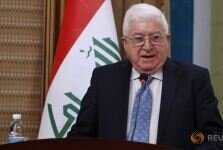KATHMANDU — As Nepalis prepared to spend a third night in the open after Saturday’s earthquake, anger began to emerge at the slow pace of recovery, with government officials in disarray and aid workers struggling to move supplies out of Kathmandu’s overrun airport.
Ms Sarga Dhaoubadel, a student living outside Kathmandu, said her family was sheltering in a playground, under a plastic sheet. There were some reports of isolated looting in her area. “No one from the government has come to offer us even a glass of water,” she said. “Nobody has come to even check our health. We are totally on our own here.”
As the focus begins to shift from the dead to the survivors, international aid agencies and officials warned the spread of disease is now the biggest concern. The monsoon season, which brings heavy rains, begins in Nepal at the end of May.
The United Nations Children’s Fund estimates nearly one million children in Nepal have been severely affected by the quake, and it has warned of waterborne and infectious diseases.
In the capital, Kathmandu, as if the powerful earthquake were not enough of a test, heavy rains pelted the thousands who sought safety in the streets, cowering under leaking tarpaulins and makeshift tents, wondering what had become of homes, lives and livelihoods thrown into limbo by the quake.
“We don’t have any place to go,” said Mr Mohammed Kabil, one of a dozen or so men who were warming themselves near a smoky campfire as the drizzle turned to rain.
They sat near the remains of the Dharahara Tower, a revered monument that was toppled by the quake.
“We don’t have any clothes, we don’t have enough food, we don’t have medicine, we don’t know when we can go back into our homes,” he said.
Mr Zubin Zaman, a humanitarian response manager with Oxfam, said hundreds of thousands of people are living in the open without access to food or toilets. More people could die from disease than were killed when buildings collapsed, he said.
“Things are not getting any better, the tremors continue, and the rains over the last two days have compounded the situation,” Mr Zaman said.
Shivaram Laghe, who lives in the ancient city of Bhaktapur, east of Kathmandu, said people living in relief camps are growing restless and unhappy with the distribution of supplies. “Everything’s being distributed in a haphazard manner,” Laghe said. “The most urgent supplies come in small batches and then everyone starts grabbing it, in the absence of coordination.”
As hundreds gathered at Nepal’s international airport trying to secure tickets out, aid workers said they struggled to get planes to land and supplies off the runway because many workers have gone home to deal with relatives, and damaged homes.
“It’s a completely chaotic situation,” said Devendra Singh Tak, who works for Save the Children. “The airport is not equipped to manage this kind of traffic, particularly when there’s no staff.”
Sitting atop a major tectonic fault, Nepal is accustomed to the tremors of the earth. But this time it has been overwhelmed by a powerful quake that killed thousands and destroyed some of the country’s most treasured temples. Past and present were destroyed all at once, making digging out and rebuilding that much more daunting.
The streets of Kathmandu were filled with people carrying bedrolls and pillows to any open space they could find, including a military parade ground that has been transformed into a giant tent city. Few people seemed willing to sleep inside, fearful that the next shock might make their homes pancake. There seemed an arbitrariness to the destruction, one building collapsing and entombing its occupants, while another nearby withstood the shock.
That, too, added to the uncertainty, the sense that sleeping in the street, in the rain, was the only hedge against the randomness of fate.
“Everyone is scared,” said Samir Thapa, a 30-year-old security guard who, like thousands of other residents, slept in the tent city. “Everyone is saying it will come again. No one is going to sleep at home.”
Across Kathmandu, especially in the oldest districts, there are piles of detritus — timber beams and broken bricks. In the heart of the historic district, the country’s most prized temples are rubble. These buildings “are what made Kathmandu special,” said Mr Sri Kitav Sangoala, a middle-age truck driver, as he surveyed the piles of bricks that the authorities believe contain more bodies. “So many sites are destroyed,” he said. “Our history is gone.”





